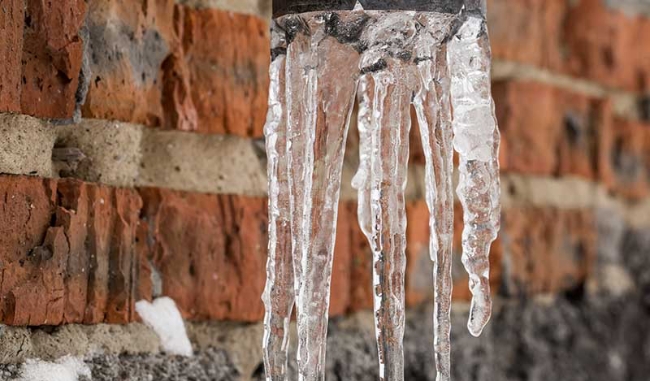Tips to Safeguard Your Pipes from Cold Weather: Professional Guidance
Tips to Safeguard Your Pipes from Cold Weather: Professional Guidance
Blog Article
What are your concepts about How to prepare your home plumbing for winter weather?

Cold weather can ruin your plumbing, specifically by freezing pipes. Below's how to prevent it from happening and what to do if it does.
Intro
As temperature levels decrease, the danger of icy pipes boosts, possibly leading to expensive fixings and water damages. Understanding exactly how to avoid icy pipelines is crucial for property owners in chilly climates.
Comprehending Frozen Pipes
What causes pipes to ice up?
Pipelines ice up when subjected to temperatures below 32 ° F (0 ° C) for expanded durations. As water inside the pipes freezes, it increases, taxing the pipe walls and possibly triggering them to burst.
Threats and damages
Frozen pipelines can result in water supply disturbances, residential property damage, and pricey repair work. Ruptured pipes can flood homes and create comprehensive architectural damage.
Indications of Frozen Pipes
Determining icy pipelines early can prevent them from rupturing.
Just how to recognize frozen pipes
Try to find lowered water circulation from taps, uncommon smells or sounds from pipes, and noticeable frost on exposed pipes.
Avoidance Tips
Insulating at risk pipelines
Wrap pipelines in insulation sleeves or make use of heat tape to protect them from freezing temperatures. Focus on pipelines in unheated or external locations of the home.
Heating methods
Keep indoor areas adequately warmed, specifically areas with plumbing. Open up cupboard doors to allow cozy air to distribute around pipelines under sinks.
Securing Outside Pipes
Garden hoses and outside faucets
Detach and drain yard hoses prior to winter. Set up frost-proof faucets or cover outdoor taps with shielded caps.
What to Do If Your Pipes Freeze
Immediate activities to take
If you believe frozen pipes, maintain taps open to eliminate stress as the ice melts. Use a hairdryer or towels soaked in warm water to thaw pipelines gradually.
Long-Term Solutions
Architectural changes
Consider rerouting pipes away from exterior walls or unheated locations. Include added insulation to attic rooms, basements, and crawl spaces.
Updating insulation
Purchase high-grade insulation for pipes, attic rooms, and wall surfaces. Correct insulation aids preserve constant temperatures and decreases the risk of icy pipes.
Conclusion
Preventing icy pipes calls for positive measures and fast reactions. By understanding the reasons, signs, and preventive measures, homeowners can shield their plumbing throughout winter.
5 Ways to Prevent Frozen Pipes
Drain Outdoor Faucets and Disconnect Hoses
First, close the shut-off valve that controls the flow of water in the pipe to your outdoor faucet. Then, head outside to disconnect and drain your hose and open the outdoor faucet to allow the water to completely drain out of the line. Turn off the faucet when done. Finally, head back to the shut-off valve and drain the remaining water inside the pipe into a bucket or container. Additionally, if you have a home irrigation system, you should consider hiring an expert to clear the system of water each year.
Insulate Pipes
One of the best and most cost-effective methods for preventing frozen water pipes is to wrap your pipes with insulation. This is especially important for areas in your home that aren’t exposed to heat, such as an attic. We suggest using foam sleeves, which can typically be found at your local hardware store.
Keep Heat Running at 65
Your pipes are located inside your walls, and the temperature there is much colder than the rest of the house. To prevent your pipes from freezing, The Insurance Information Institute suggests that you keep your home heated to at least 65 degrees, even when traveling. You may want to invest in smart devices that can keep an eye on the temperature in your home while you’re away.
Leave Water Dripping
Moving water — even a small trickle — can prevent ice from forming inside your pipes. When freezing temps are imminent, start a drip of water from all faucets that serve exposed pipes. Leaving a few faucets running will also help relieve pressure inside the pipes and help prevent a rupture if the water inside freezes.
Open Cupboard Doors
Warm your kitchen and bathroom pipes by opening cupboards and vanities. You should also leave your interior doors ajar to help warm air circulate evenly throughout your home.

I am just very involved in How To Avoid Freezing Pipes and I really hope you appreciated the entire blog posting. Appreciated our blog entry? Please share it. Help others check it out. Thanks so much for your time invested reading it.
Book Today Report this page